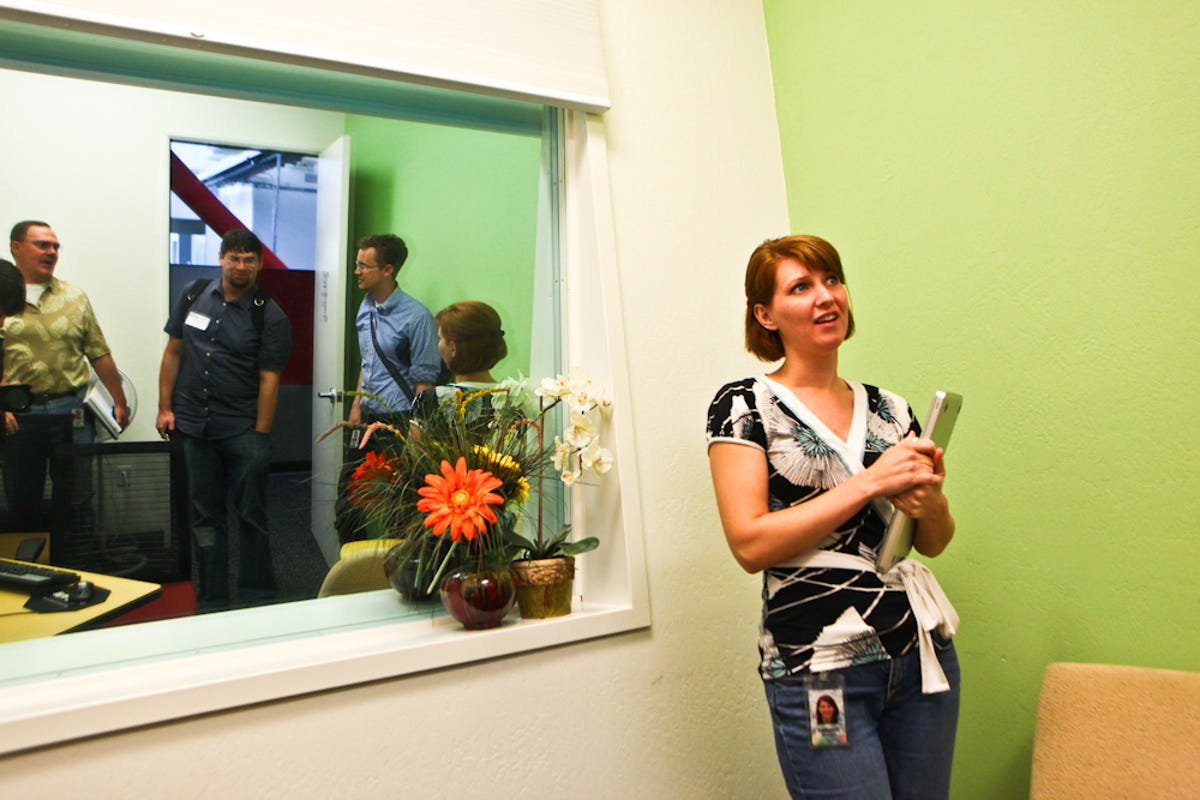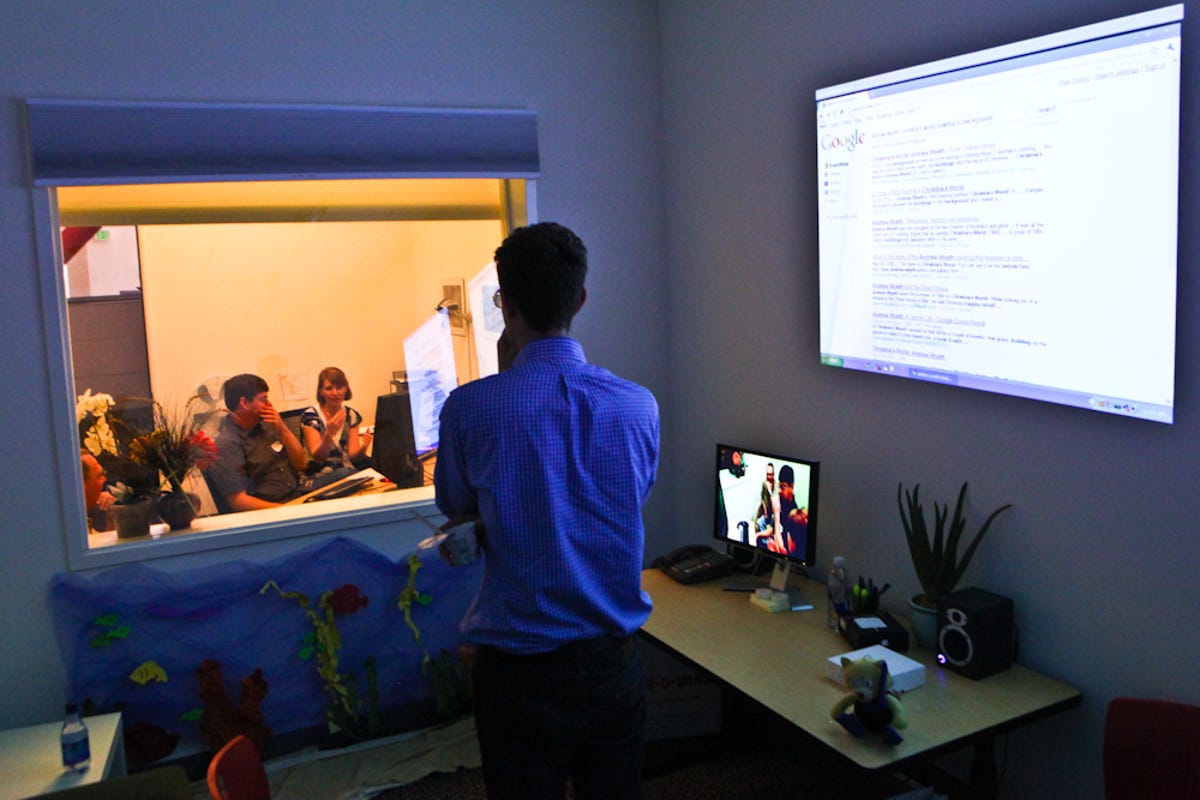What works and what doesn't inside Google's labs (photos)
After all the code is written, product developers put their visions to the test in front of real people inside the Google Usability Testing Labs.

User experience researcher at Google
This week LaDawn Jentzsch, user experience researcher at Google, took CNET inside Google's Usability Testing Labs at Google's headquarters here, one of the last stops for a new product before it is rolled out to the public.
In an industry known for backend programming, engineering, and algorithms, the difference between the coded intention of a product and the human experience can be vastly different.
Inside Google's Usability Testing Labs
Feedback in a controlled environment like this gives product teams the chance to try out new ideas and product concepts. Feedback is important. While the ultimate goal is an improved user experience, care must be taken to not upset the existing experience too abruptly.
Eye-tracking lasers
Here, the red line maps the path of the eyes, and the larger red ball shows the current point of focus.
A team outlines its goals
LaDawn Jentzsch, user experience researcher at Google, and CNET's Tom Krazit sit down in the research room inside the Google Usability Testing Labs in Mountain View, Calif.
Part of the user experience assessment
Results
Seated at the computer with a list of tasks

Video cameras monitor these experiments
It requires a lot of work to take a product from start to finish, and often after hundreds of hours of development and back-end programming, seating a real person in front of a product can be the pinnacle moment, when real people encounter real problems. It's an element of crucial human feedback that Google has yet to replicate. We still need humans, for now.

